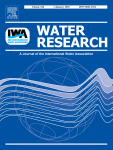Ver ítem
- xmlui.general.dspace_homeCentros Regionales y EEAsCentro Regional Buenos Aires SurEEA BalcarceArtículos científicosxmlui.ArtifactBrowser.ItemViewer.trail
- Inicio
- Centros Regionales y EEAs
- Centro Regional Buenos Aires Sur
- EEA Balcarce
- Artículos científicos
- Ver ítem
Glyphosate and aminomethylphosphonic acid (AMPA) are commonly found in urban streams and wetlands of Melbourne, Australia
Resumen
Glyphosate is the most widely-used pesticide for weed control in agriculture and in urban and residential areas. This is the first study to quantify glyphosate and AMPA levels in surface water in Australia from different land uses. Glyphosate and AMPA was measured in surface water from 10 rural streams, 30 urban stormwater wetlands and 9 urban streams located in and around the city of Melbourne, Australia on five occasions between October 2017 and
[ver mas...]
Glyphosate is the most widely-used pesticide for weed control in agriculture and in urban and residential areas. This is the first study to quantify glyphosate and AMPA levels in surface water in Australia from different land uses. Glyphosate and AMPA was measured in surface water from 10 rural streams, 30 urban stormwater wetlands and 9 urban streams located in and around the city of Melbourne, Australia on five occasions between October 2017 and February 2018. Glyphosate and AMPA were present in most of the urban surface water samples. The frequency of detection of glyphosate was 77% in wetlands and 79% in urban streams, whereas it was only detected in 4% of the rural streams. Similarly, AMPA detection was 91% in wetlands and 97% in urban streams, whereas it was only present in 6% of the rural stream samples. In both urban streams and wetlands, the highest average glyphosate concentrations occurred in November (1.8 ± 2.2 μg L−1). Overall, wetlands and streams associated with urban land use are vulnerable to glyphosate contamination. These results highlight the importance of screening for contaminants in urban stormwater to identify the source of pollutants that may end up in aquatic ecosystems and the risks therefrom.
[Cerrar]

Autor
Okada, Elena;
Allinson, Mayumi;
Barral, Maria Paula;
Clarke, Bradley;
Allison, Graeme;
Fuente
Water Research 168 : 115139 (2020)
Fecha
2020-01
Editorial
Elsevier
ISSN
0043-1354
Formato
pdf
Tipo de documento
artículo
Palabras Claves
Derechos de acceso
Restringido
 Excepto donde se diga explicitamente, este item se publica bajo la siguiente descripción: Creative Commons Attribution-NonCommercial-ShareAlike 2.5 Unported (CC BY-NC-SA 2.5)
Excepto donde se diga explicitamente, este item se publica bajo la siguiente descripción: Creative Commons Attribution-NonCommercial-ShareAlike 2.5 Unported (CC BY-NC-SA 2.5)

